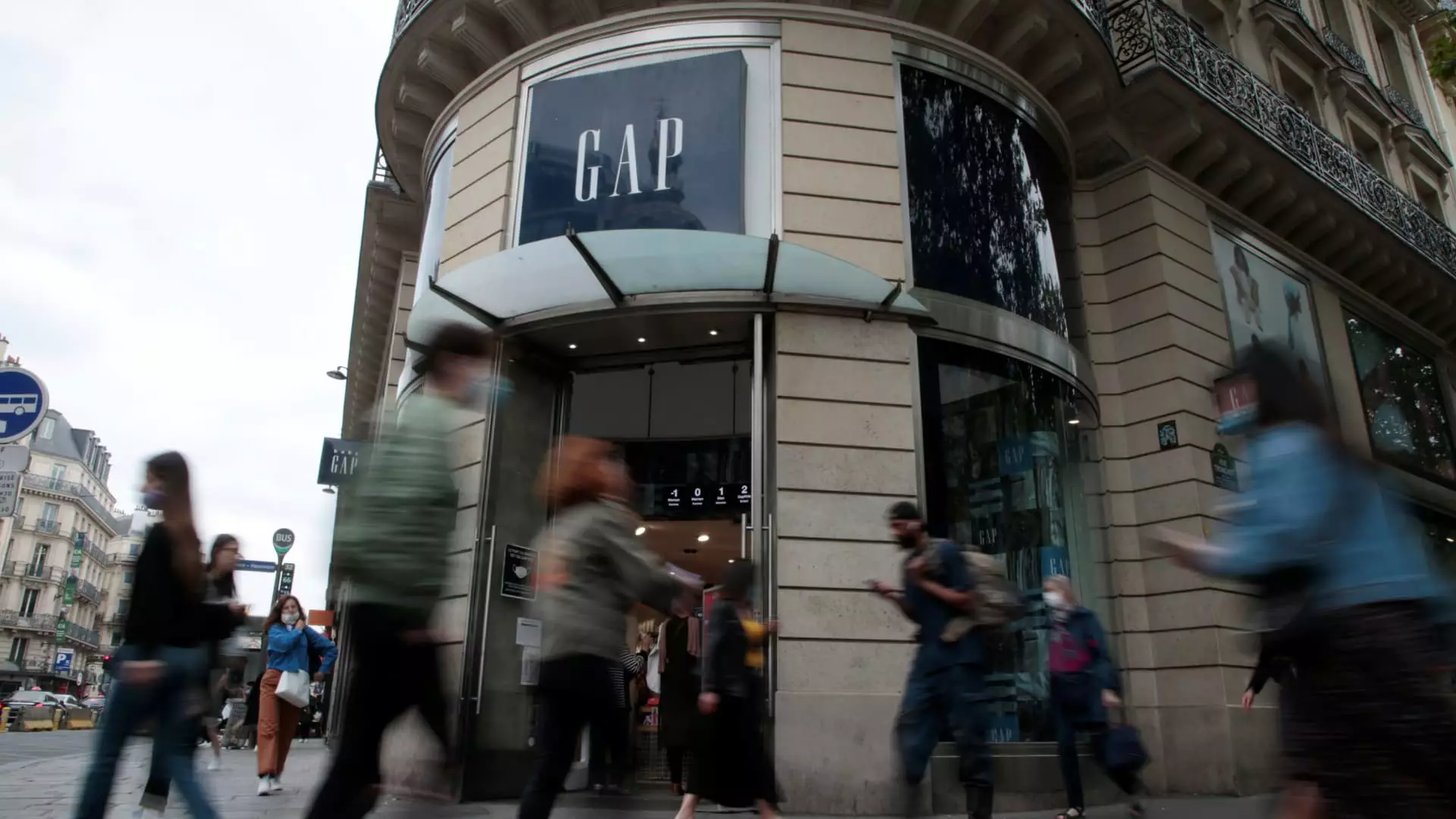In a clarion call from the apparel industry, Gap Inc. stands at perilous crossroads as it grapples with new tariffs that threaten to reshape its financial outlook. The retailer publicly announced that the looming 30% duties on imports from China could sap its coffers by a staggering $250 to $300 million, if these trade barriers remain entrenched. Although the company’s initial guidance seemed optimistic, it now faces an uphill battle—one complicated by the shifting landscape of global trade, particularly under the weight of current geopolitical tensions. While other businesses may relish the distractions of recovery, Gap can hardly afford to bask in the glow of its fiscal performance when external factors loom like dark clouds.
The company is not merely reporting numbers; it is navigating a labyrinth of potential pitfalls, with CEO Richard Dickson articulating a vague promise of no “meaningful price increases.” This assertion, however, feels disingenuous as the real repercussions of these tariffs are yet to fully manifest. Indeed, phrases like “strong brands can win in any market” may inspire confidence, yet the reality suggests that merely having a robust brand will not inoculate Gap from the fallout of mounting costs.
Performance Amidst Adversity
Despite the storm clouds, Gap’s first-quarter results outdid expectations, reporting earnings per share of 51 cents against a forecast of 45 cents. This shows the resilience of its brands amid adversity. Revenue also rose slightly, reaching $3.46 billion—an essential detail aimed at reassuring analysts and investors alike. However, one must ponder whether this is truly a solid foundation or simply a piece of driftwood in an unpredictable ocean.
On the surface, the figures may appear strong, but deeper scrutiny reveals a tale of caution. The guidance for full-year sales has been revisited down to an expected growth of merely 1% to 2%, trailing behind market expectations of 1.3%. Such a backdrop hints at the underlying currents being faced by Gap—a reality that brings into question whether the financial accomplishments reported can hold up against the robust headwinds posed by international tariffs and supply chain fragility.
Strategic Realignments and Risks
Gap’s admission about sourcing only about 10% of its goods from China—expected to plummet to below 3%—means the company is proactively mitigating risk. This pivot underscores the urgent need for diversification, yet that strategy also raises eyebrows about the sustainability of their new sources, primarily Vietnam and Indonesia. With potential reciprocal tariffs looming on these countries, especially a staggering 46% on imports from Vietnam, Gap’s future profitability rests on precarious ground.
The question arises: Is Gap merely moving its operations around on the chessboard rather than truly transforming its approach? In theory, relocating its manufacturing bases could be sustainable. However, should these new tariffs take effect, it may backfire, threatening to unravel the gains made thus far in projecting the company as a “player” in the industry. It’s undeniably a gamble, and the stakes couldn’t be higher.
A Closer Look at Brand Performance
Reflecting on individual brand performance brings about mixed feelings. Old Navy stands out as the jewel in Gap’s crown, posting $2 billion in sales—a 3% increase characterized by growth that exceeded expectations. Conversely, the Gap brand itself—traditionally hampered by an image crisis—has finally begun to rehabilitate, boasting a 5% rise in sales. These developments evoke a sense of cautious optimism but serve as a reminder that significant challenges persist.
However, not all brands within the Gap portfolio share in this resurgence. The athleisure label Athleta continues to struggle, reporting a disheartening 6% decline in sales. Moreover, when one considers Banana Republic’s flat performance, it becomes evident that not all is well within Gap’s offerings. The hurdles these brands face are no mere blips on the radar; they point more broadly to a struggle for relevance in a rapidly evolving retail landscape.
The Broader Impak: A Call for Genuine Reform
As the retail landscape continues to grapple with economic uncertainties and international trade policies, safety and stability become pivotal themes. While Gap navigates these challenges, the question of genuine reform remains salient. Will it merely dance around the edges of profitability, or will it redefine its core mission to deliver beyond superficial expectations? As shareholders gaze into the crystal ball of fiscal reports, they must recognize that attention to resilient strategies rather than mere numbers is what will truly draw the evolutionary arc of Gap Inc.
In a business climate that idolizes innovation, complacency is a slippery slope. If Gap can’t transition effectively to avoid punitive tariffs over time, the question looms—how strong is a brand when the foundation is built atop shifting sands? As we move forward in this era of economic scrutiny, it will become increasingly critical for businesses like Gap to navigate both external pressures and internal challenges to reveal the true nature of their viability in a complex marketplace.

